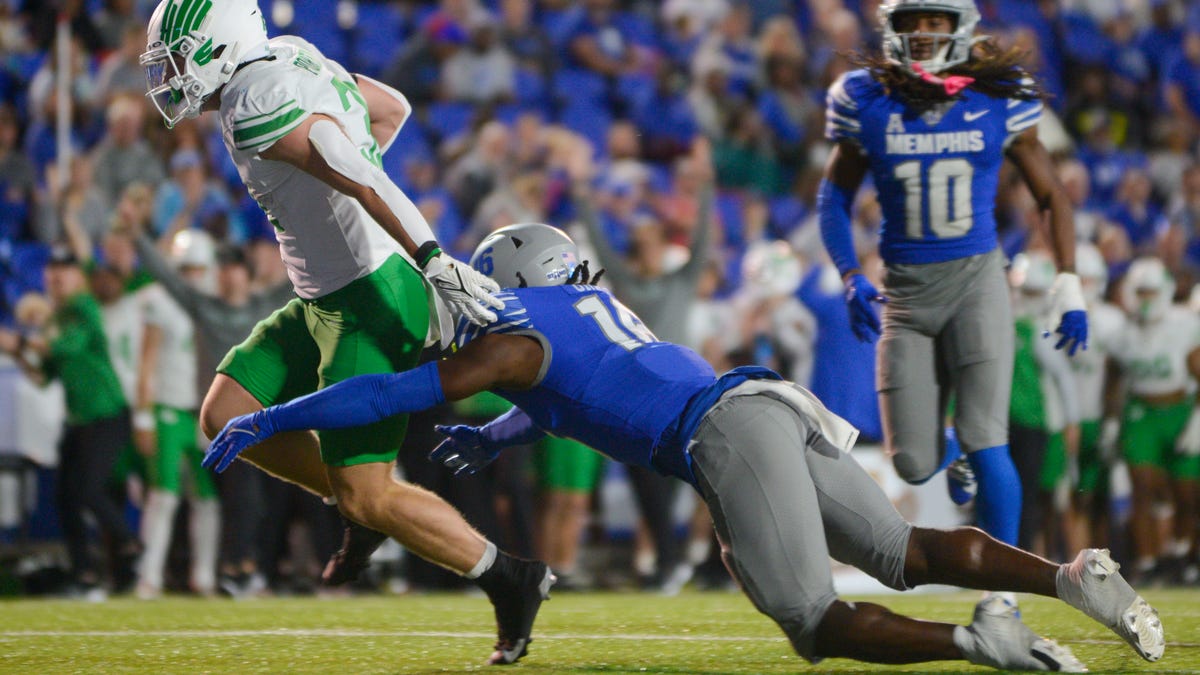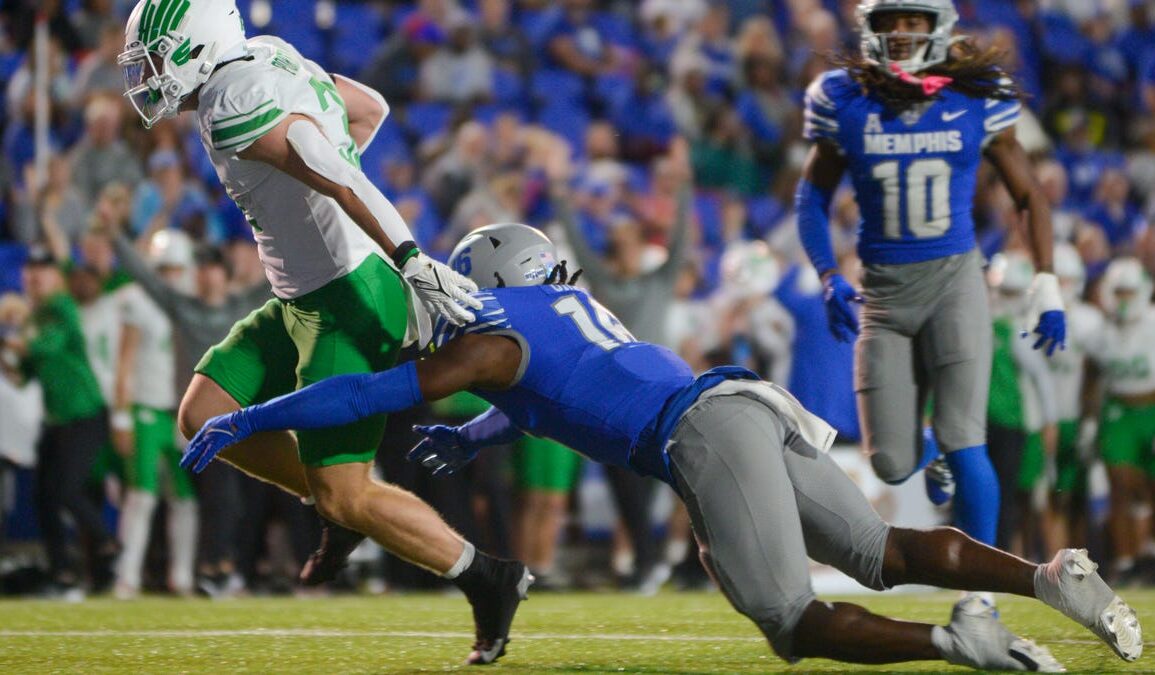
The College Football Playoff still will have 12 teams in 2025.
Other than that? No one seems to know.
College football leaders have been discussing potential formats for the playoff, but there has not yet been a consensus as the 2025 season gets closer. There almost certainly will be expansion.
Though there have been plenty of potential ideas thrown out there, the 5+11 format seems to be the most likely path at this point. That would mean five automatic bids for five conference champions and 11 at-large bids. Most people outside of the SEC and Big Ten favor that format because it does not protect spots for the two major power conferences and would make regular-season games more important.
Though Memphis wants to get into a power conference, the most important tenet of the new format from the Tigers’ perspective will be the Group of Five spot (essentially a fifth conference champion berth). That preserves guaranteed access for someone from the Group of Five.
How 5+11 could mean a *slight* advantage over current format for Group of Five schools
It has always been difficult for Group of Five teams to get their shine in the playoff. UCF went undefeated and won the national championship in 2018, but the football playoff committee still didn’t let it in. Cincinnati, then in the AAC, finally broke through in 2021 after an undefeated season that included a win over Notre Dame.
Playoff expansion in 2024 meant guaranteed access to the playoff for the first time, and Boise State claimed that spot by winning the Mountain West title as part of a 12-2 season.
So, in a 16-team playoff with the 5+11 model, could the Group of Five get two teams in? It’s extremely unlikely, but could be possible under the right circumstances.
Take last season. Boise State was ranked in the top 10 nationally and was essentially assured of a spot once it won the Mountain West title. The chance for another G5 team would’ve been from the AAC. Tulane was ranked No. 17 going into the last week of the season, but then the Green Wave lost at home to Memphis, lost the AAC title game to Army and fell out of the rankings.
For the sake of argument, though, let’s play out a different scenario. Tulane beats Memphis, then beats Army for the AAC title. Would that have been enough to move the Green Wave up one spot, especially when the teams ranked directly above them who were not automatic qualifiers — Alabama, Ole Miss and South Carolina — did not play during championship week?
That scenario is one of the reasons the SEC is interested in conference-specific play-in games, and it also means that if the G5 — which will become the G6 in 2026 when the Pac-12 respawns — gets more than one team into a playoff field, there’s probably going to be immediate uproar about the format.
How the Pac-12 could change Memphis’ long-term playoff outlook
The Pac-12 has had interest in Memphis since it started re-adding teams last year, but for the sake of this piece we’re going to assume Memphis is still in the AAC for the next few years.
How will the Group of Six be viewed, broadly, in 2026 and beyond? The AAC’s reign of dominance appears to be close to its end, especially as the conference has gone two straight years without finishing with the top-ranked G5 team for the first time ever.
In 2026, the Pac-12 will have:
- Oregon State
- Washington State
- Boise State
- Fresno State
- San Diego State
- Colorado State
- Utah State
The conference still needs to add at least one more football school to meet the FBS criteria of eight, though.
Is that a stronger league than the AAC, which touts Memphis, Tulane, UTSA, USF, Army and Navy as some of its top schools? Maybe, depending on the long-term plans for Oregon State and Washington State. It does mean, though, that those two conferences likely will be competing for one spot in the CFP in the immediate future.
Reach sports writer Jonah Dylan at jonah.dylan@commercialappeal.com or on X @thejonahdylan.
This post was originally published on this site be sure to check out more of their content.






